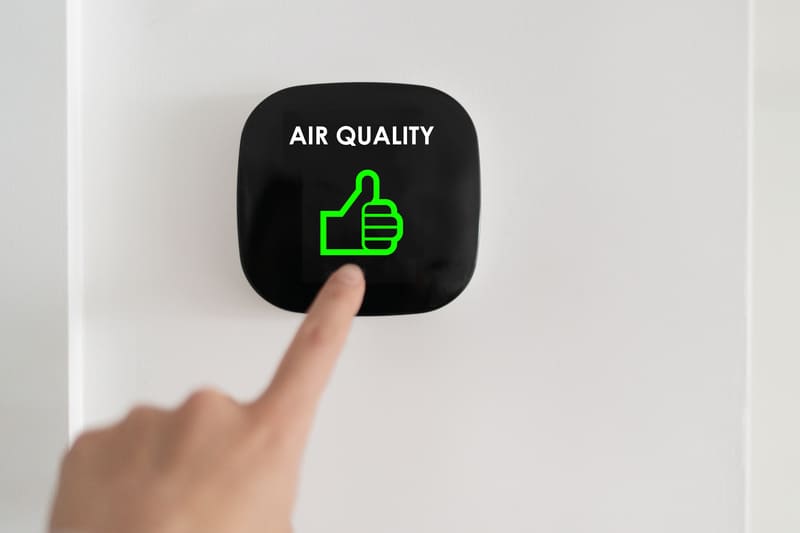
Air Quality Testing

Air quality refers to the condition of the air within an indoor or outdoor environment, particularly in terms of its cleanliness, composition, and the presence of pollutants. Monitoring and maintaining good air quality are essential for promoting health and well-being, as poor air quality can have significant adverse effects on human health, the environment, and even the economy.
Here’s an overview of the key aspects of air quality:
Pollutants
Air pollutants can originate from various sources, including vehicle emissions, industrial activities, agriculture, construction, and natural sources such as wildfires and volcanic eruptions. Common pollutants include particulate matter (PM), nitrogen dioxide (NO2), sulfur dioxide (SO2), carbon monoxide (CO), ozone (O3), volatile organic compounds (VOCs), and hazardous air pollutants (HAPs). These pollutants can have harmful effects on respiratory health, cardiovascular health, and overall well-being.
Indoor Air Quality (IAQ)
Indoor air quality refers to the quality of air within buildings and enclosed spaces. Indoor air can be polluted by factors such as tobacco smoke, household chemicals, building materials, mold, dust mites, pet dander, and inadequate ventilation. Poor indoor air quality can lead to health problems such as allergies, asthma, respiratory infections, and sick building syndrome (SBS). Monitoring and improving indoor air quality are essential for creating healthy and comfortable indoor environments, especially considering that people spend a significant amount of time indoors.
Outdoor Air Quality
Outdoor air quality refers to the quality of air in the ambient environment, such as urban areas, rural areas, and industrial zones. Outdoor air pollution is a major concern in many regions due to vehicle emissions, industrial activities, power generation, agriculture, and natural sources. Poor outdoor air quality can contribute to a range of health issues, including respiratory diseases, cardiovascular diseases, and premature death. Governments and organizations often monitor outdoor air quality using networks of air quality monitoring stations and set air quality standards and regulations to protect public health and the environment.
Air Quality Monitoring
Air quality monitoring involves measuring and analyzing various pollutants in the air to assess their concentrations and trends over time. Monitoring data help identify pollution sources, evaluate compliance with air quality standards, and inform policy decisions and pollution control strategies. Monitoring methods include continuous monitoring using stationary monitoring stations, mobile monitoring using vehicles equipped with sensors, and remote sensing using satellites and aerial drones.
Air Quality Index (AQI)
The Air Quality Index is a standardized scale used to communicate the quality of outdoor air to the public. It provides information on pollutant concentrations and associated health risks, categorizing air quality into different levels (e.g., good, moderate, unhealthy) and providing corresponding health advisories and recommendations. The AQI typically considers pollutants such as PM2.5, PM10, ozone, NO2, SO2, and CO.
Overall, maintaining good air quality is crucial for protecting public health, preserving the environment, and ensuring sustainable development. Efforts to monitor, regulate, and mitigate air pollution are essential for addressing air quality challenges and promoting a healthier and cleaner environment for current and future generations.






